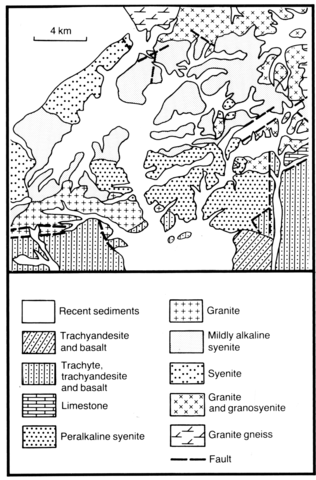stripes
This occurrence is wedge-shaped and has an area of about 230 km2. It cuts through a variety of plutonic, volcanic and volcanic-sedimentary formations of Proterozoic and Palaeozoic age. Three stages in the formation of the massif are identified. The first stage involved the intrusion of coarse-grained, moderately alkaline syenites, fine- and medium-grained porphyritic syenites and two feldspar leucogranites. The second stage encompassed moderately alkaline granites, quartz microsyenites and microgranites and the third stage coarse- and medium-grained peralkaline syenites and quartz syenites, medium- and fine-grained syenites, quartz syenites and dykes of alkaline syenite, quartz syenite and granite. All these rocks are compositionally similar with alkali feldspar predominant and dark minerals represented by aegirine and riebeckite with biotite in subordinate amounts.
ZANVILEVICH, A.N., LITVINOVSKY, B.A. and ANDRE’E V, G.V. 1985. The Mongolian-Transbaikalian alkali-granitoid province (geology and petrology). Nauka, Moscow. 232 pp.

